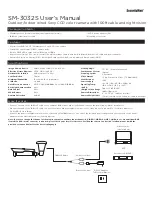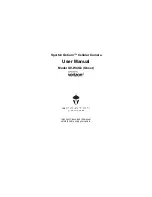
V1.02
Thom Hogan’s Complete Guide to the Nikon D300
Page 296
off the right edge). Indeed, the minimum amount of noise
for a low contrast, gray target would be generated by
overexposing the gray target so that the histogram spike
was well right of center, then using Capture NX or
Photoshop to re-center the exposure (Curves, Gamma,
Exposure Compensation, etc.). On a D300 you don’t want
to fail to use the full range of the histogram to the right of
center (i.e. underexpose).
•
ISO 400 is actually quite close to 200 in quality, so don’t
be afraid to use it.
Normally you don’t want to give up
any image quality at all, but the ever so slight increase in
noise and loss of dynamic range at ISO 400 isn’t worth
agonizing over: if it allows you to capture what you need
to, use it! Indeed, using ISO 400 is a better choice than
slightly underexposing ISO 200.
•
Use the LO ISO values only if highlights are not important.
While these ISO values are as noise-free as ISO 200, they
differ in how highlights are handled. In high contrast
scenes, highlights are often clipped at the LO ISO values.
•
ISO 800 and 1600 are quite usable, and shouldn’t be
avoided.
Indeed, the D300, set and exposed correctly,
generates better results at these ISO values than almost
any previous Nikon DSLR. Note that camera dynamic
range is lowered a bit, though. Consider using a
High ISO
NR
value of
Low
and little or no sharpening in the Picture
Control you use in order to further minimize noise
production.
•
Use ISO 3200 in a pinch
. Expect a loss of color saturation
and visible noise. Underexpose at ISO 3200 and you
worsen the situation. Dynamic range is significantly
reduced from the base ISO value. Seriously consider using
a
High ISO NR
value of
Normal
and
no
sharpening in the
Picture Control you use in order to minimize noise
production, and avoid high JPEG compression settings.
•
Use the HI ISO settings only if you have to
. Images shot
with the HI ISO options simply have too much noise and
too little camera dynamic range to make them useful for
















































